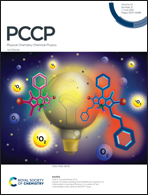Graphether: a reversible and high-capacity anode material for sodium-ion batteries with ultrafast directional Na-ion diffusion
Abstract
Sodium-ion batteries (SIBs) have been attracting great attention as the most promising alternative to lithium-ion batteries (LIBs) for large-scale energy storage. However, the absence of suitable anode materials is the main bottleneck for the commercial application of SIBs. Herein, the adsorption and diffusion behaviors of Na on graphether are predicted by first-principles density functional calculations. Our results show that Na atoms can be adsorbed on graphether forming a uniform and stable coverage on both sides. Even at low intercalated Na concentrations, the semiconducting graphether can be changed to a metallic state, ensuring good electrical conductivity. Due to the structural anisotropy of graphether, the Na+ ions show a remarkable one-dimensional diffusion with an ultralow energy barrier of 0.04 eV, suggesting ultrafast charge/discharge characteristics. The graphether monolayer has a high theoretical specific capacity of 670 mA h g−1, which is much higher than commercial graphite anode materials. Furthermore, the average voltage is 1.58 V, comparable with that of commercial TiO2 anode materials for LIBs (1.5 V). During the charge/discharge process, graphether could mostly preserve the structural integrity upon the adsorption of Na even at the maximum concentration, suggesting its good reversibility. All these results show that graphether is a promising anode material for high-performance SIBs.



 Please wait while we load your content...
Please wait while we load your content...